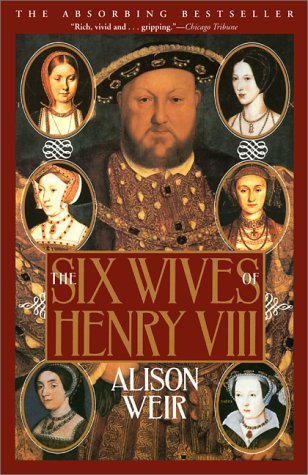
The Six Wives of Henry VIII
Book Description
Six women, one king, and a relentless quest for power. 'The Six Wives of Henry VIII' by Alison Weir paints a vivid tapestry of ambition, betrayal, and heartache within the Tudor court. Each queen, from the defiant Anne Boleyn to the devout Catherine of Aragon, battles for survival in a world where love can lead to glory—or the executioner's block. As alliances shift and secrets unravel, their fates intertwine with the man who seeks a male heir at any cost. Will loyalty triumph over ambition, or will the crown demand the ultimate sacrifice?
Quick Book Summary
Alison Weir’s "The Six Wives of Henry VIII" is a masterful exploration of one of history’s most notorious monarchs and the women who shaped his reign. Revealing both the individual ambitions and struggles of Catherine of Aragon, Anne Boleyn, Jane Seymour, Anne of Cleves, Catherine Howard, and Catherine Parr, Weir paints a vivid portrait of life in the Tudor court—a place rife with intrigue, betrayal, and the constant pursuit of power. The book meticulously unravels how each queen navigated the dangers of royal favor and disfavor while exploring Henry VIII’s shifting affections and relentless desire for a male heir. The result is a nuanced look at personal sacrifice, dynastic ambition, and the enduring impact of these women on English history.
Summary of Key Ideas
Table of Contents
The Political Intrigue and Turmoil of the Tudor Court
The story begins with Catherine of Aragon, whose initial happy marriage to Henry VIII sours as her failure to produce a male heir puts her position in jeopardy. Despite her intelligence and steadfastness, she finds herself maneuvering within a patriarchal system bent on discarding her for a younger, more promising queen. Weir explores Catherine’s determination to uphold her status and faith, illuminating the religious and political battles waged on her behalf, all set against the backdrop of Europe’s shifting alliances.
The Personalities and Motivations of the Six Queens
Anne Boleyn’s rise marks a new era of court intrigue as Henry’s passion for her leads to England’s break with the Roman Catholic Church. Anne’s wit and ambition, coupled with her polarizing reputation, thrust her into the heart of the Reformation and religious turmoil. Weir details the methods Anne used to secure her position and the dangers posed by jealous courtiers and Henry’s growing dissatisfaction, resulting in accusations of adultery and her tragic execution.
Religious Upheaval and Its Personal Toll
Jane Seymour’s brief reign provides a stark contrast, marked by her demure disposition and the birth of Henry’s long-sought male heir, Edward VI. While Jane is depicted as somewhat passive compared to her predecessors, Weir describes her strategic navigation of court factions and the pressures of producing an heir. Jane’s death shortly after childbirth adds a somber note, underscoring the perils faced by royal consorts.
The Quest for a Male Heir and Dynastic Security
Anne of Cleves arrives as a political pawn, her marriage arranged to secure an alliance with Protestant Germany. Upon her arrival, Henry is famously disappointed, leading to an annulment that spares Anne the fate of some of her predecessors. Through Anne’s story, Weir examines the precariousness of female agency and the importance of diplomatic savvy in Tudor politics. Anne’s ability to maintain favor and secure a generous settlement highlights her quiet resilience.
Legacy and Enduring Influence of the Wives
The final sections focus on Catherine Howard and Catherine Parr. Catherine Howard’s youth and indiscretion precipitate her downfall, illustrating how the court’s unforgiving nature devours the unprepared. In contrast, Catherine Parr’s intelligence and tact allow her to navigate a complex court while influencing religious reform. Surviving Henry, she outlives the king and becomes an enduring figure in her own right. Together, these stories illuminate the lasting legacy of Henry’s wives: women whose courage and adaptability left a profound mark on England’s religious, cultural, and political landscape.
Download This Summary
Get a free PDF of this summary instantly — no email required.





